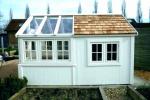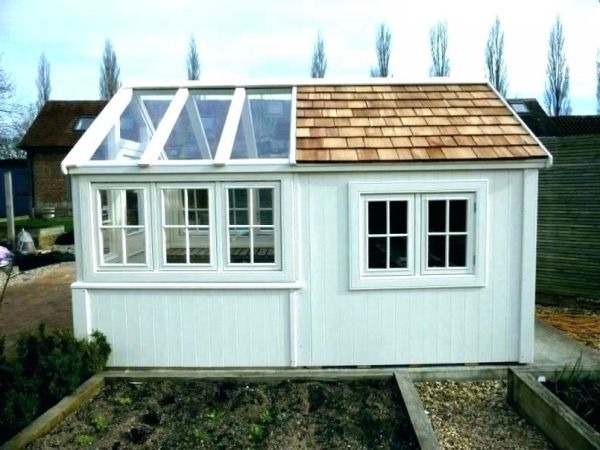Tool Outbuilding Architecture Diagrams 16 x 24: Facts To Ponder When Assembling A Garden Shed


In typical recycle fashion we didn't have enough of one kind of siding material for whole shed so we pieced it together kind of like a Mondrian painting in corresponding shapes. Want to pack up and move 1000 miles, easy. The attic floor needs to be square and have straight sides. To strengthen piers, you can concrete them into the ground. On the side walls slice the vertical boards at a length long enough to tuck under the lower overhanging roof board and run below floor joists. Use same process to make and install front window. You may (https://shedconstructionplans.com/gable-shed-plans-list) be able to substitute some of these items with tools that you prefer in order to make it work better for yourself.
Press framed wall into position so that the base plates lie within subfloor chalk outline and top of wall lines up with ceiling chalk outline. One of easiest foundations to construct for a shed is a gravel foundation, especially if you know how to create a gravel shed foundation. To do this we took and set the blocks in the shape and size that the building was going to be, we then tied a string around the outer blocks to a rectangle all way around it. If you're wondering how to build a pier shed foundation, or if it's a project you could do, you'll be happy to know that it isn't as complicated as it seems.
Then secured it direct to the plastic shelving. A finished attic adds valuable living space to a home. If blade doesn't insert into the seam of a connection, drive (check this) the tip of nail bar into the seam to set up separation, and trim nails. The requirements for fastening struts and ceiling braces to top plates are specified by your local building code. Just as easily, the floor could be a few more pallet panels joined together. Because of this, two opposite side posts would need to be parallel. As complicated as this might seem and as many places that would try to tell you that you need to fully understand complex geometry, the reality is much simpler.
When it locates a joist, it would beep or flash. It pretty much lines itself up from that point on. While we did not have to resort to this method, there should be enough play to allow you to chop the pin now. In my area, you need to fence the poll or surrounding yard, whichever is more cost effective. The idea of building by yourself might seem a bit daunting at first. Our fourth great tip is the find the materials you need in a wide variety of ways. Want it looking south instead of west, no problem. In this manner you save time and increase chances of getting a professional result.
In some windy areas, heavier anchors at the corners with straps or cables securing walls and roof structure may be required. Houses have gable, hipped, mansard, gambrel, flat, and outbuilding roofs. So print some labels, or in a pinch, just use a marker. Don't position your accessory building in an area inaccessible to your home's electricity supply. It may seem obvious, but it would surprise you how many people fail to consider this. Then nail second top plates to the tops of the walls, overlapping them at the corners. When the frame sections were lifted into place they were leveled with more gravel, dry set in concrete and braced with the perpendicular frame members.
The brown posts are the ones for corners of the barn. Every few rows use a tape measure to make sure you're rows are still straight. Roofing felt works with shingles to keep the interior dry. Place marked plates on a flat surface and connect them on each end with full studs, typically called 8-foot studs although they actually would be shorter to allow for plates. Alternatively, you could insert bent anchor bolts instead of post bases. Use a miter saw to make all the angle cuts accurately. Attach a 1x3 frame around the front of each door. The easiest solution is to rip 2x6s to form a 45-degree bevel on one long edge.
Raise your gun to a sharp angle with the tip still compressed against skid. Below are some of more common ways to attach floor framing members in different situations. Precast concrete piers or poured footings should be set in 6 inches along front and back sides of the outbuilding and spaced 3 feet apart. Nail 1 x 6 tongue-and-groove cedar siding in place.